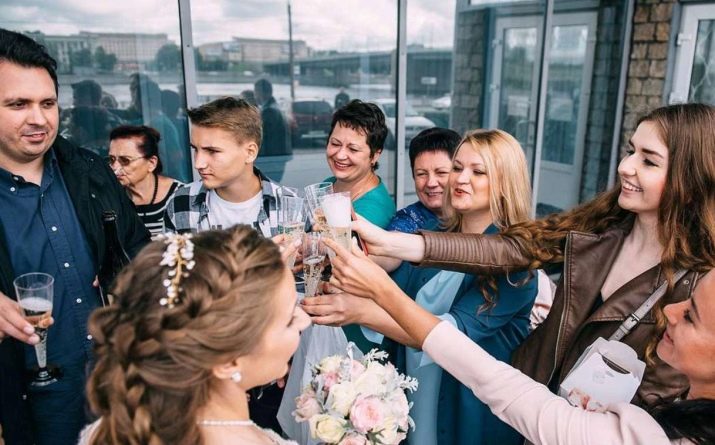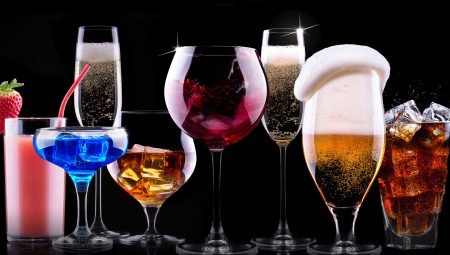Despite the large number of wedding agencies, many future newlyweds or their parents prefer to plan the celebration on their own. After all, no one knows the guests better than friends and relatives. In order not to spend too much money, but not to get into an awkward situation, it is worth considering useful tips for calculating the amount of alcohol and soft drinks for a wedding.
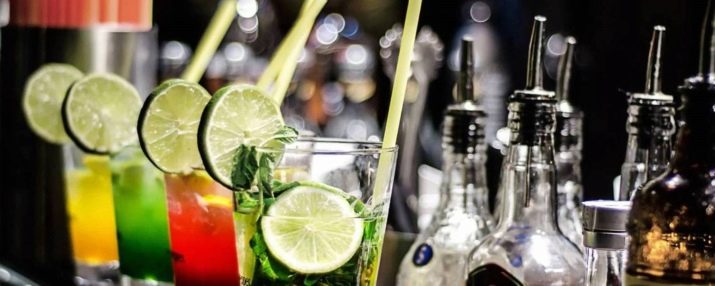
General tips
The main rule when planning a celebration - alcohol and other drinks must be abundant until the end of the event.
There are two main approaches to planning the amount of drink. If you thoroughly know the preferences of each of your guests, then exactly those drinks that will be drunk by the people sitting at it are exposed on each table. And if not very familiar people will be present at your celebration, then the starting set of bottles on each table should be exactly the same.
Intermediate options with rare exceptions are not welcome, because each of the guests should be equally dear to you. Situations when guests will see elite drinks that are absent from them on the next table are unacceptable - there should be no division of guests into categories.
The main allowable exception to this rule is a table for young people and their parents, where the level of drinks can be slightly higher than everyone else. Although this is generally undesirable.
Do not forget that the calculation of alcohol for a wedding below is purely indicative, so you should always consider the characteristics of your guests and take a bottle or two of each of the presented drinks in reserve.
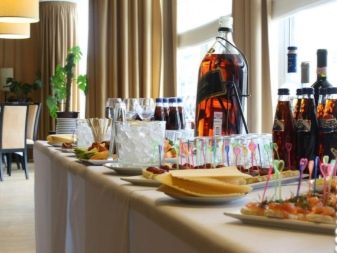

Where to start the assessment
First of all, you need to count the total number of guests at your wedding. After that, you can divide them into three categories:
- those who usually drink a lot;
- those who drink in moderation;
- those who do not drink at all.
If you are not aware of the preferences of any guest, by default you can classify him as moderate drinkers. It is also worthwhile to pre-estimate the number of men and women, as they usually prefer different drinks. Finally, it is worth considering the expected age of the guests.
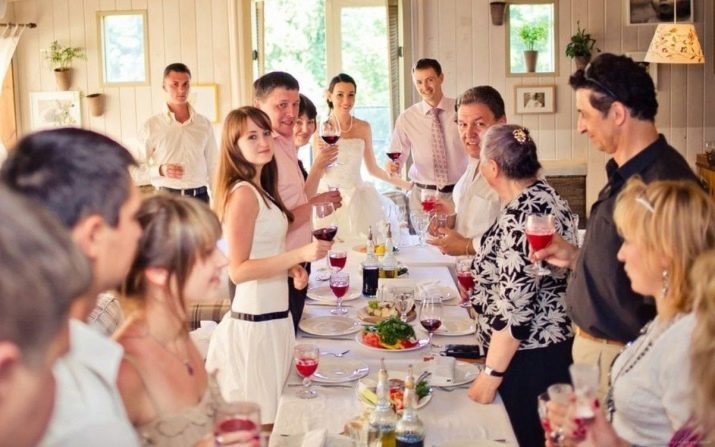
Estimating the number of drinks is easiest, dividing them into several groups:
- strong alcohol;
- wine and wine drinks;
- beer;
- soft drinks without alcohol.
Consider the basic algorithms for assessing the required number of bottles for each of these categories. The above patterns apply only to weddings celebrated at a moderate temperature. If your celebration takes place in the hot summer, then strong alcohol can be taken in 2 times less, and beer and wine - about 3 times more. And vice versa, if it happens in the winter, it is better to increase the amount of hard drinks by 2-3 times and completely abandon beer.
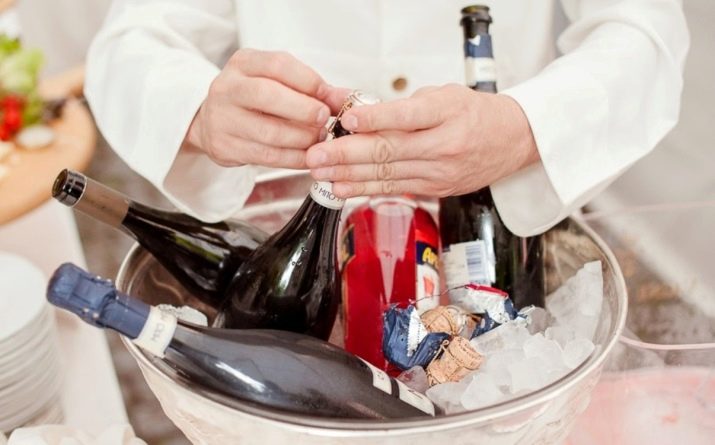
Spirits
The following types of alcohol are usually classified as strong:
- vodka;
- brandy or brandy;
- rum;
- gin;
- whiskey;
- other drinks with a strength of 30 degrees.
Men usually drink these drinks, so it’s more convenient to make the calculation specifically for male guests.
By default, the expected amount of strong alcohol drunk by guests moderately drinking is about 300 grams per person. For heavily drinking guests, this figure tends to 0.5 liters.
Thus, if about 30 men are present at your celebration, then you will need from 9 liters of strong drinks, which means 18 bottles of 0.5 l each or 13 bottles of 0.7 l each.
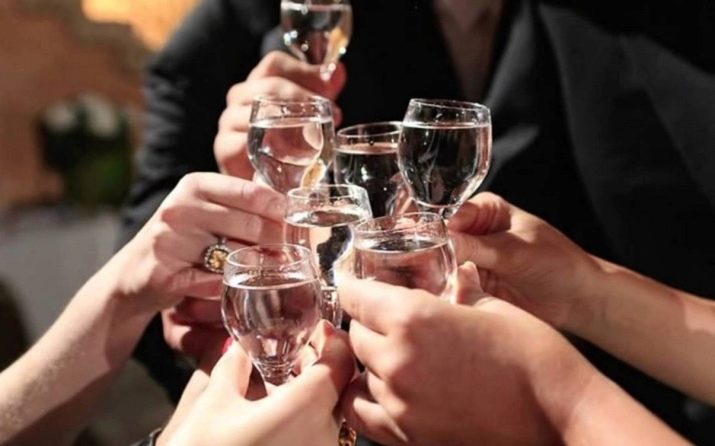
If at your banquet 20 average drinking guests and 10 heavy drinkers are expected, then you will need 11 liters of strong alcohol - these are 22 half-liter bottles or 16 containers of 0.7 liter each.
Given Russian traditions, the most common proportion between types of strong alcohol is 60% vodka and 40% cognac, whiskey, rum and so on.
If your banquet will be predominantly attended by older people, then the amount of vodka can be increased up to 70%. If, on the contrary, a large number of young people are expected, then it is best to reduce the amount of vodka to 35% and at the same time take 30% whiskey and 35% cognac.
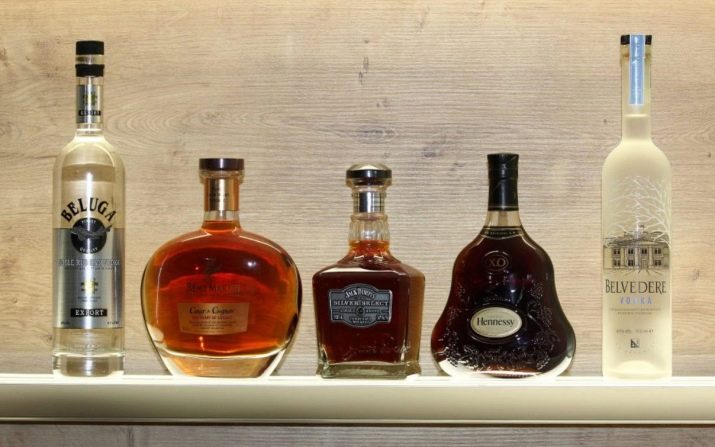
Wine and champagne
This category of drinks is usually preferred by women, so it is reasonable to exclude men from this part of the assessment and estimate the number of bottles based on the number of women. Here, the calculation is much simpler than in the case of strong alcohol - for each guest it is worth taking 1 bottle of wine with a volume of 0.7 liters. It should be borne in mind that red wines are usually more popular than white, so for every 6 bottles of red it is worth taking 4 bottles of white.
If you want martini or other vermouths to be present at your celebration instead of wine, then the basic proportions for it are the same as for ordinary wine.
As for the drink category, preference should be given equally to semi-dry and semi-sweet wines. Dessert wines are good for snacks, so they are unlikely to be popular at a banquet. Dry wine is a product for individual connoisseurs, so do not put it on every table. However, several bottles of this drink in reserve should still be purchased in case there is a guest at the table drinking only such wine.
Champagne is considered a separate category of wine drinks at weddings. The first toasts are usually spoken specifically with him, so each guest should be able to get a glass and at least sip from it. So, for every wedding guest, regardless of his age, gender and alcohol preferences, there should be 250 ml of champagne. So if only 50 people are expected at your wedding, then you will need 13 liters of this drink, that is 19 bottles of 0.7 liter capacity.
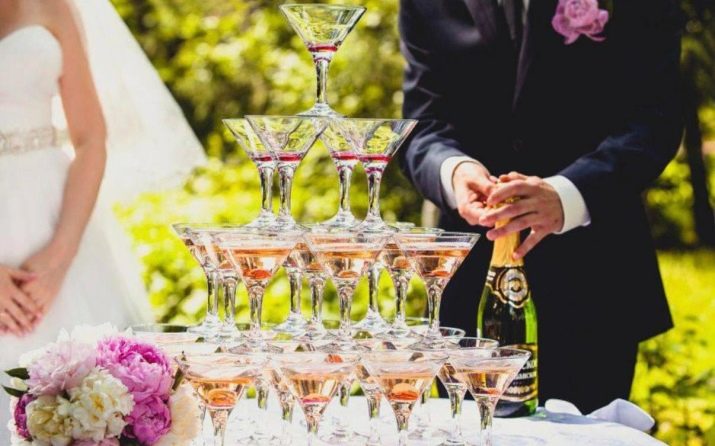
Beer at the banquet
Nowadays, it has become not uncommon for a person to fundamentally not drink any alcohol other than beer.
And if earlier beer at a wedding banquet was considered a sign of bad taste, now the presence of a foamy drink, if not on the tables, then at least on the menu, is rather welcome. This is especially true for weddings that are played on hot summer days.
Each guest who will definitely drink beer should take at least 2 liters of this drink. And in the summer it is best to take 2-3 liters of beer for each guest of your holiday. Of course, it will be preferable to craft beer from private breweries or elite brands like Guiness and Hoegaarden. The ratio of light and dark beer should be about 70 and 30%, respectively.
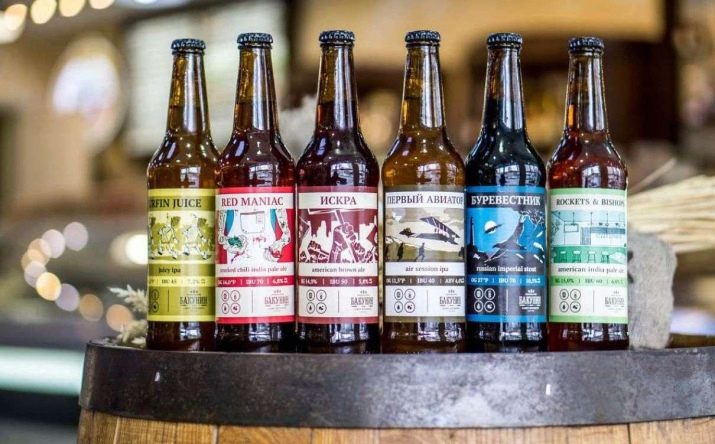
You will learn more about how to calculate the amount of alcoholic drinks for a wedding from the video below.
Soft drinks
The minimum volume of available non-alcoholic soft drinks is 1.5 liters per person. In the hot summer, you can safely multiply this figure by 2.
At the same time, about 1 liter of this figure should be mineral water. It is best to take approximately 70% non-carbonated mineral water and 30% carbonated.
Serving it in large containers is undesirable - it is better to let each guest have a glass bottle of up to 0.5 l.
In addition, for each guest it is worth stocking about 0.5 liters of juice or fruit drink. Most often, weddings use orange and apple juices in equal proportions. Grape juice can also be recommended.
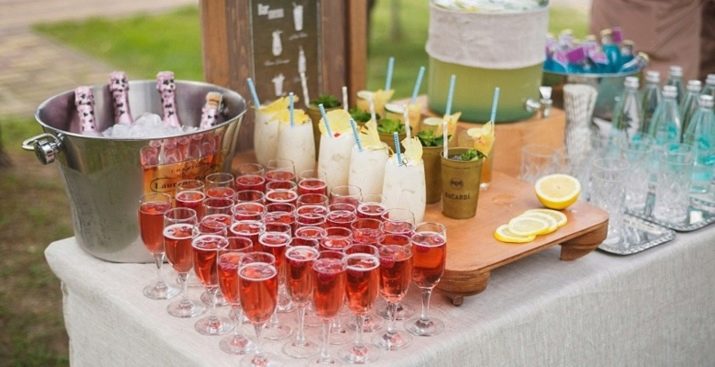
Drinks for a walk and registry office
When calculating for the entire ceremony, and not just for a banquet, do not forget to take into account the drinks necessary for registration of marriage and the next walk.
For the official part, it is enough to take champagne at the rate of 1 glass for each person who will be present at it.
If you plan to invite 10 guests to the registry office, then you will accordingly need 2.5 liters or 4 bottles of sparkling wine.
For a walk you can take 2 times less bottles of champagne than there will be participants in it. So, if 10 people participate in it, then it is worth taking 5 bottles with you. Just do not forget to bring along soft drinks at the rate of 300 g per 1 person. It is most convenient and practical to bring along 1 bottle of 0.33 liters for each of the participants in the walk.
